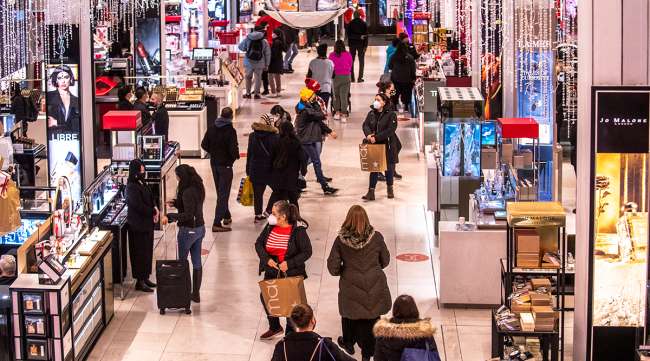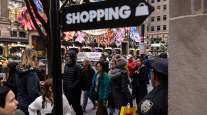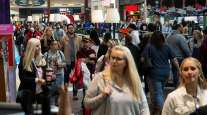December Retail Sales Slip After Record Holiday Season

[Stay on top of transportation news: Get TTNews in your inbox.]
NEW YORK — Americans overlooked shortages, spiking prices and uncertainty over the omicron variant to break spending records during the critical holiday shopping season. But figures released Jan. 14 show that after spending robustly early in the holiday season, consumers sharply slowed their purchases from November to December.
The National Retail Federation, the nation’s largest retail trade group, said that sales surged by a record 14.1% from November and December 2020 to the same months in 2021. Those figures blew away the federation’s projections for growth of between 8.5% to 10.5%, and more than tripled the average gain over the past five years of 4.4%.
“After a dispiriting holiday season in 2020, most shoppers were absolutely determined to enjoy themselves come what may,” said Neil Saunders, managing director of GlobalData.
Want more news? Listen to today's daily briefing above or go here for more info
Yet data issued by the Commerce Department showed that by the end of December, spending had trailed off sharply enough to catch economists off guard and raise doubts about the sustainability of retail sales in the face of omicron, inflation and persistent shortages of labor and supplies. Retail sales fell a seasonally adjusted 1.9% from November to December.
Spending fell broadly across numerous sectors: Department store sales fell 7%, restaurants 0.8% and online purchases 8.7% compared with November.
Many economists expect the caution that consumers displayed last month to carry over into this year and potentially slow the economy. Still, with average hourly pay rising and the unemployment rate steadily dropping, analysts say spending and growth could pick up, at least modestly, once omicron fades.
“American consumers closed 2021 on a very sour note,” said Sal Guatieri, senior economist at BMO Capital Markets. “That said, high household savings, strong job growth and improved confidence once the latest COVID wave crests should put consumers back on a high-spending track in the second quarter.”

New year, new resilience. Host Mike Freeze and reporters Connor Wolf and Eugene Mulero uncover the lessons 2020 and 2021 taught trucking's business leaders and consider business and legislative solutions in the year ahead. Hear a snippet above, and get the full program by going to RoadSigns.TTNews.com.
Retailers warned for months that their supply chains had become snarled as the nation swiftly emerged from the pandemic recession, and they urged consumers to shop early for their holiday purchases. It appears that many Americans took heed and, in effect, moved up the usual holiday shopping period by a month or so.
Commerce Department figures show retail sales jumped 1.8% in October, and on Jan. 14 it reported that year-over-year numbers show that retail sales surged 16.9% last month compared with December 2020. For all of 2021, sales spiked 19.3% compared with the previous year.
Some economists caution that the seasonal adjustment of retail sales has been thrown off by the pandemic. Seasonal adjustment is intended to account for the normal spike in shopping in December for the holiday season. This year, though, because many Americans started shopping so early, the seasonal adjustment might have exaggerated any December spending retreat.
Some analysts also suspect that shoppers who waited until the end of the holiday season and didn’t find what they wanted took a pass or they bought gift cards. That spending won’t show up in retail data until those cards are redeemed.
All told, Americans appear to be spending their money differently — and spending more, not less, collectively.
“Consumer spending will remain the cornerstone of economic growth this year, but the near-term path will be choppy amid surging omicron cases,” said Lydia Boussour, lead U.S. economist at Oxford Economics. Boussour said she thinks that after a soft patch in the first quarter, spending should rebound in the spring on the strength of strong wage growth and savings.
Stephen Stanley, chief economist at Amherst Pierpoint, agreed, pointing to a robust job market, pent-up demand and “a mountainous pile of extra cash to spend.”
“People will spend again once the omicron wave fades,” Stanley predicted.




